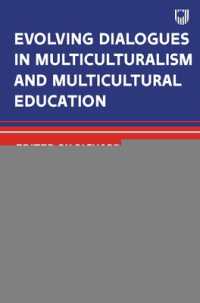- ホーム
- > 洋書
- > 英文書
- > Science / Mathematics
Full Description
The book gives a comprehensive account of the basic algebraic properties of the classical groups over rings. Much of the theory appears in book form for the first time, and most proofs are given in detail. The book also includes a revised and expanded version of Dieudonne's classical theory over division rings. The authors analyse congruence subgroups, normal subgroups and quotient groups, they describe their isomorphisms and investigate connections with linear and hermitian K-theory. A first insight is offered through the simplest case of the general linear group. All the other classical groups, notably the symplectic, unitary and orthogonal groups, are dealt with uniformly as isometry groups of generalized quadratic modules. New results on the unitary Steinberg groups, the associated K2-groups and the unitary symbols in these groups lead to simplified presentation theorems for the classical groups. Related material such as the K-theory exact sequences of Bass and Sharpe and the Merkurjev-Suslin theorem is outlined. From the foreword by J.
Dieudonne: "All mathematicians interested in classical groups should be grateful to these two outstanding investigators for having brought together old and new results (many of them their own) into a superbly organized whole. I am confident that their book will remain for a long time the standard reference in the theory."








